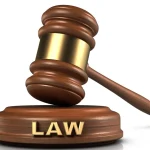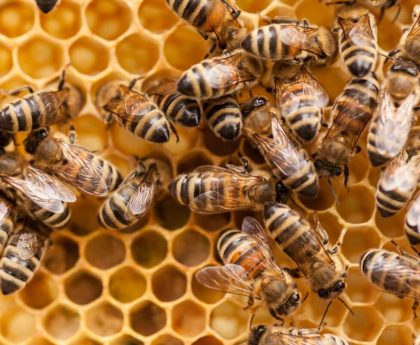Choosing the right fire extinguisher is crucial for ensuring safety in your home, workplace, or any other environment. Not all fires are the same, and different types of fire extinguishers are designed to handle specific kinds of fires. In this guide, we will explain the different types of fire extinguishers, their uses, and how to choose the right one for your needs.
Types of Fire Extinguishers
There are several types of fire extinguishers, each designed to combat specific types of fires. Here’s a breakdown of the most common types:
Note:- For those in Dubai seeking reliable fire extinguishers and expert advice on fire safety, contacting Sensor Tech can provide valuable support and solutions.Whether for residential, commercial, or industrial applications, their knowledgeable team can help you select the right fire extinguishers to ensure maximum safety. Don’t hesitate to reach out to Sensor Tech for any inquiries or assistance regarding Fire extinguishers suppliers Dubai.
1. Water Fire Extinguishers
Use: Suitable for Class A fires.
How it Works: Cools the burning material, reducing the temperature below the ignition point.
Ideal For: Schools, offices, warehouses, and residential areas where common combustibles are present.
2. Foam Fire Extinguishers
Use: Suitable for Class A and B fires.
How it Works: Creates a barrier between the fire and the fuel, extinguishing the flame.
Ideal For: Locations with flammable liquids and areas where wood, paper, or textiles are stored.
3. Dry Powder Fire Extinguishers
Use: Suitable for Class A, B, and C fires; some are also effective on Class D fires.
How it Works: Powder interferes with the chemical reactions occurring in the fire, helping to extinguish it quickly.
Ideal For: Garages, welding or vehicle shops, and industries using flammable gases.
4. Carbon Dioxide (CO2) Fire Extinguishers
Use: Suitable for Class B and C fires.
How it Works: Displaces oxygen and cools the fuel.
Ideal For: Electrical fires, laboratories, and areas with a lot of electrical equipment like server rooms.
5. Wet Chemical Fire Extinguishers
Use: Suitable for Class K fires; some also work on Class A fires.
How it Works: Removes the heat from the fire and creates a barrier to stop re-ignition.
Ideal For: Commercial kitchens and locations with high-volume cooking.
Choosing the Right Fire Extinguisher for Your Needs

Assessing Your Environment
The first step in choosing the right fire extinguisher is to assess your environment and identify potential fire hazards. Consider the types of materials present and the nature of activities conducted in the area.
For Homes: Most homes will benefit from a multi-purpose extinguisher that can handle Class A, B, and C fires. This ensures you’re prepared for a variety of common household fire scenarios.
For Kitchens: In kitchens, especially commercial ones, a wet chemical extinguisher is essential for handling Class K fires involving cooking oils and fats.
For Offices and Schools: Class A and B fires are common in these environments, so having foam or water extinguishers readily available is crucial. For areas with significant electrical equipment, CO2 extinguishers are recommended.
For Industrial Settings: Industrial environments often have specific risks. Dry powder extinguishers are suitable for handling various fire types, including those involving flammable gases and metals.
Considering Ease of Use
Ensure that the fire extinguisher you choose is easy to use. In an emergency, you don’t want to struggle with complicated instructions. Look for extinguishers with clear labeling and simple operation mechanisms.
Placement and Accessibility
Strategic Placement
Place fire extinguishers in easily accessible locations where fires are most likely to occur. In homes, this could be the kitchen, garage, or near the fireplace. In workplaces, place extinguishers near exit routes and in areas with significant fire risks.
Mounting and Visibility
Mount fire extinguishers on walls to ensure they are visible and easy to reach. Avoid placing them behind obstacles or in cluttered areas.
Regular Maintenance and Inspection
Regular Checks
Fire extinguishers should be inspected regularly to ensure they are in working condition. Check the pressure gauge, look for any signs of damage, and ensure the pin and tamper seal are intact.
Professional Servicing
Have your fire extinguishers professionally serviced at least once a year. This includes a thorough inspection and maintenance to ensure they will function correctly when needed.
Training and Education
Educate Occupants
Ensure that everyone in your home or workplace knows how to use a fire extinguisher. Conduct regular training sessions and fire drills to familiarize occupants with the proper use and location of extinguishers.
Use the PASS Method
Teach the PASS method for using a fire extinguisher:
- Pull the pin.
- Aim the nozzle at the base of the fire.
- Squeeze the handle.
- Sweep the nozzle from side to side.
Conclusion:
Choosing the right fire extinguisher is a vital part of fire safety. By understanding the different types of extinguishers and their uses, assessing your environment, and ensuring proper placement and maintenance, you can be well-prepared to handle a fire emergency. Remember, the best way to deal with a fire is to prevent it from starting, but having the right fire extinguisher on hand can make all the difference in protecting your property and loved ones.
Note :- To Read More Articles Visit on whoisblogworld.





